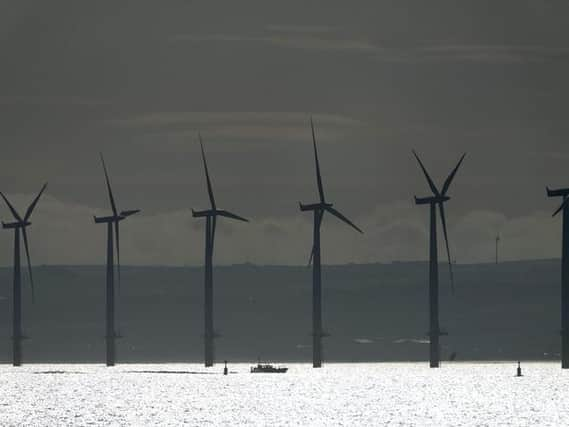Renewable energy sites generated more than 100 gigawatts per hour of electricity in Wakefield last year


PM Boris Johnson said the coronavirus crisis should be used as a catalyst to make the UK the world leader in offshore wind power generation, creating thousands of jobs in the process.
But with the plans focusing largely on offshore wind farms, the Association for Renewable Energy and Clean Technology said the role of bioenergy should not be overlooked.
Advertisement
Hide AdAdvertisement
Hide AdFigures from the Department for Business, Energy and Industrial Strategy show 122,533 megawatts per hour (around 123 gigawatts) of renewable electricity were generated in Wakefield in 2019.
This was 69% more energy than the 73 GWh produced in 2014, the earliest year of data available.
The biggest producer of energy in Wakefield last year was plant biomass, which generated 39,134 MWh – 32% of the total.
This was followed by landfill gas, which is created by the decomposition of organic materials in a landfill (26%), and solar power – which generated a further 24,568MWh (20%).
Advertisement
Hide AdAdvertisement
Hide AdRenewable electricity generated around a third of the UK's total energy last year (120,675 GWh) – almost double the amount it did in 2014.
Offshore wind farms, which are turbines located at sea, and onshore wind farms, based on land, were each responsible for 27% of the UK's total, but the Government's plan focuses largely on those in the water.
Downing Street said the £160 million investment programme will enable the sector to support up to 60,000 jobs by 2030, upping the target for offshore wind from 30 to 40 gigawatts.
Speaking at the Conservative Party Conference, Mr Johnson said: “Your kettle, your washing machine, your cooker, your heating, your plug-in electric vehicle – the whole lot of them will get their juice cleanly and without guilt from the breezes that blow around these islands.
Advertisement
Hide AdAdvertisement
Hide Ad“As Saudi Arabia is to oil, the UK is to wind – a place of almost limitless resource, but in the case of wind without the carbon emissions and without the damage to the environment."
Behind wind farms (54%), plant biomass facilities were the third biggest generator of renewable energy in the UK last year – with 21%.
It is electricity generated using plant-based fuels, including wood pellets and wood chips, bioenergy crops or even agricultural and domestic waste.
The technology has good support from the public, with the Government's own polls showing 68% of people support biomass energy – but solar and offshore turbines were more popular.
Advertisement
Hide AdAdvertisement
Hide AdDr Nina Skorupska, chief executive of the Association for Renewable Energy and Clean Technology said the UK risks falling short of its net zero ambitions without biomass power, noting the Committee on Climate Change identified the technology as critical.
She added: "Bioenergy is the little-known leader in British renewables.
"The role of biomass should not be overlooked and strong Ministerial backing continues to be needed.”